Madness in Art: A Powerful Connection
Madness and art have long shared a profound and powerful connection, where the boundaries between genius and instability often blur. Many acclaimed...
Maya M. Tola 28 October 2024
The modern way of living is very hectic. There simply is no time to relax while keeping a job and trying to tackle a million chores that creep up. Engaging with relaxing paintings can provide a nurturing experience for the mind and spirit, ultimately increasing our energy levels.
Let’s see some laid-back paintings and maybe we can relax a bit!
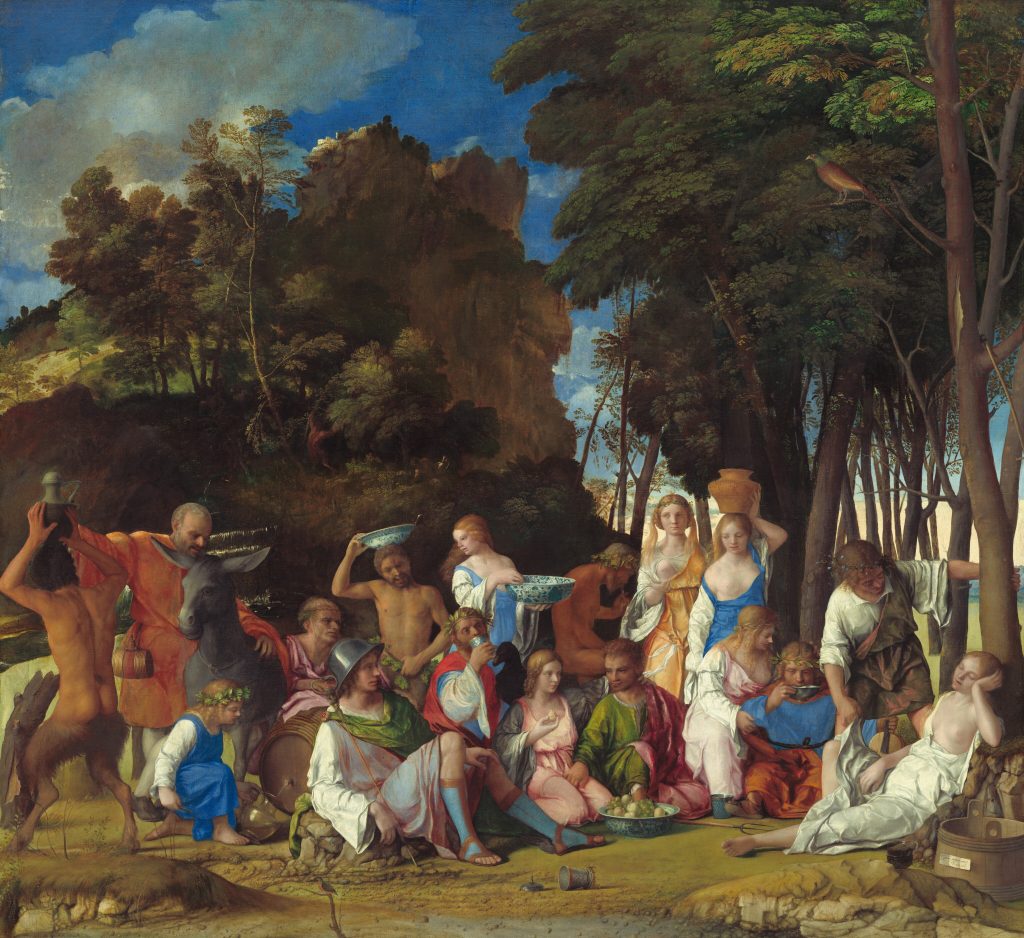
Relaxing Paintings: Giovanni Bellini and Titian, Feast of the Gods, 1514, National Gallery of Art, Washington, DC, USA.
No one knows how to party as the Greek gods do. The gods are relaxing under the Italian sun, attended by nymphs and satyrs. The party is in full swing, the gods eating and drinking. To the right, we see a scene from Ovid’s Fasti, Priapus, the god of fertility is lifting the gown of a sleeping nymph.
The painting was created by two fathers of Venetian painting, Giovanni Bellini and his then-student Titian, for Duke Alfonso d’Este to decorate the Camerino d’alabastro (alabaster study) of his castle in Ferrara.
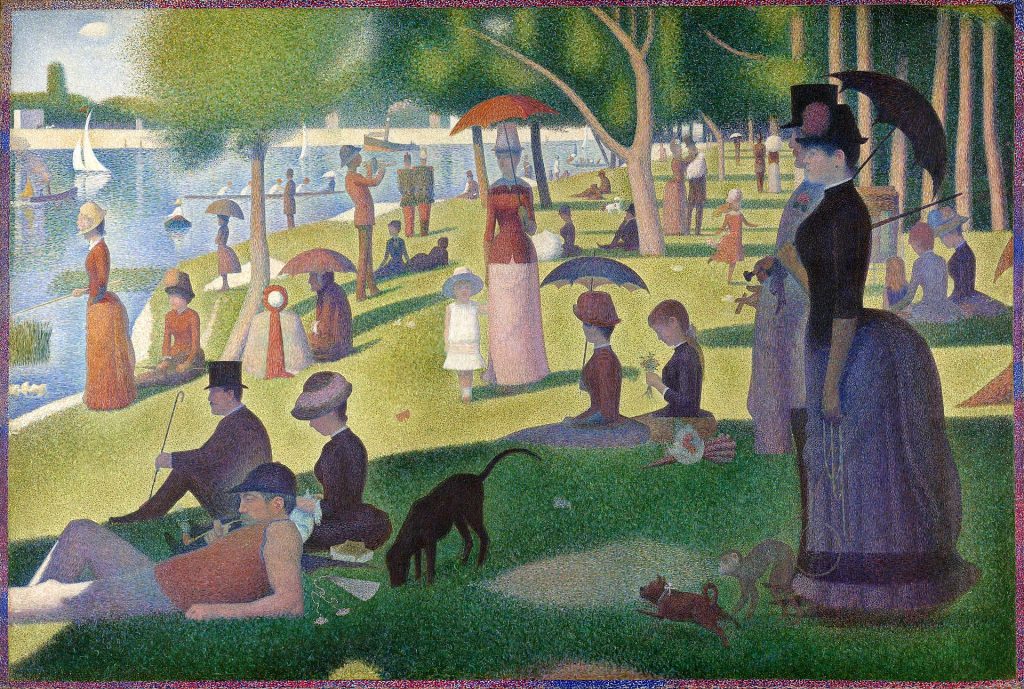
Relaxing Paintings: George Seurat, A Sunday on La Grande Jatte, 1884-86, Art Institute of Chicago, Chicago, IL, USA. Wikimedia Commons (public domain).
However, if a picnic in the Italian countryside is not your thing, then maybe belle epoque France is more to your liking. Welcome to the Grande Jate, a small island on the Seine and the go-to place for the French upper class to have a good time. The bourgeoisie is relaxing in the sun, little children are playing around, and to the lower right, a dog is playing with a monkey.
Seurat used a new style called Pointillism for this work. In essence, he placed dots of different colors side by side, that when seen from afar, created a new color. Seurat thought that this technique made colors brighter.
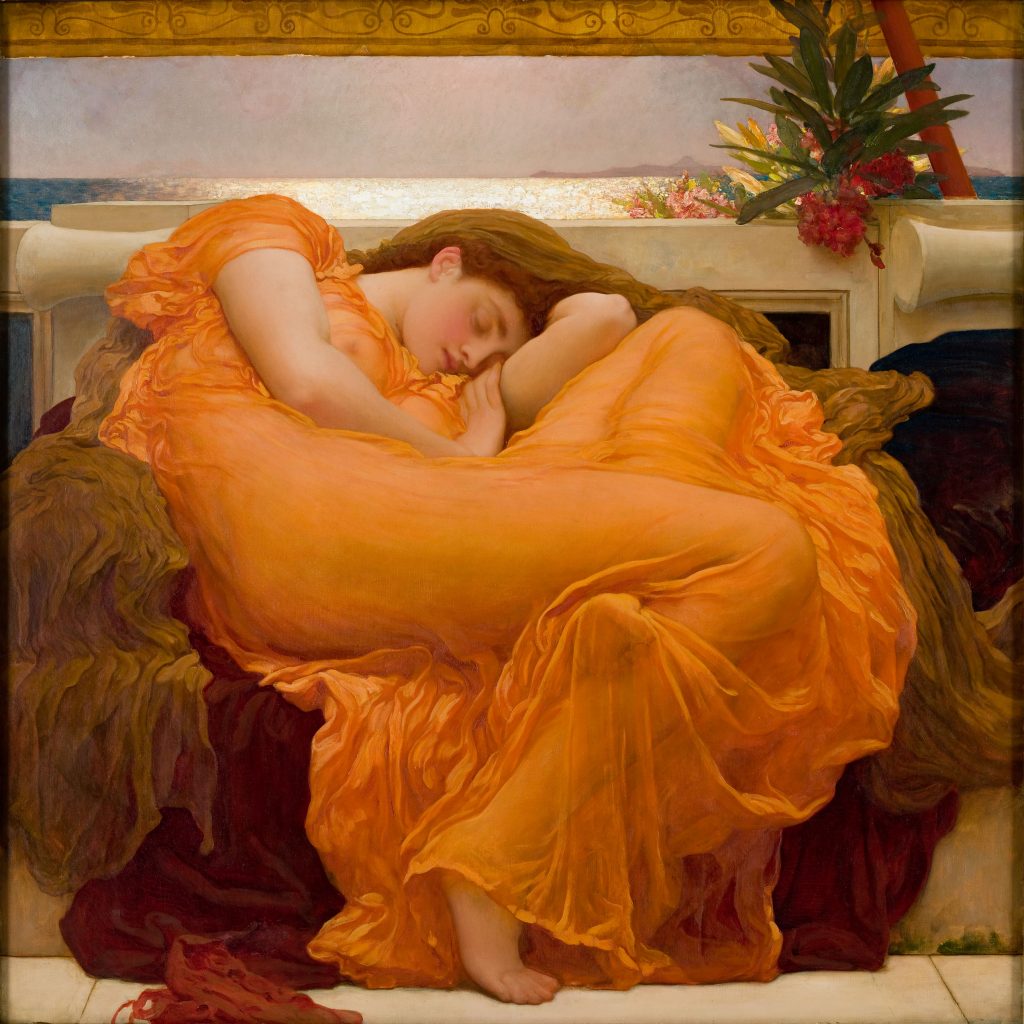
Relaxing Paintings: Frederic Leighton, Flaming June, 1895, Museo de Arte de Ponce, Ponce, Puerto Rico. Wikimedia Commons (public domain).
When are we more relaxed than when we are sleeping? A young woman in a brilliant orange dress sleeps tucked in a huge armchair. Behind her, the sun sets over the Mediterranean Sea. The girl is a personification of the summer heat in June.
Frederic Leighton was president of the Royal Academy and an important figure in the British art world in the 19th century. This painting shows his ideas that focus attention on color and form over a narrative. Leighton states that the girl’s pose is inspired by the pose of a tired model. The work belongs to the Museo de Arte de Ponce in Puerto Rico but is on loan at the Metropolitan Museum of Art.
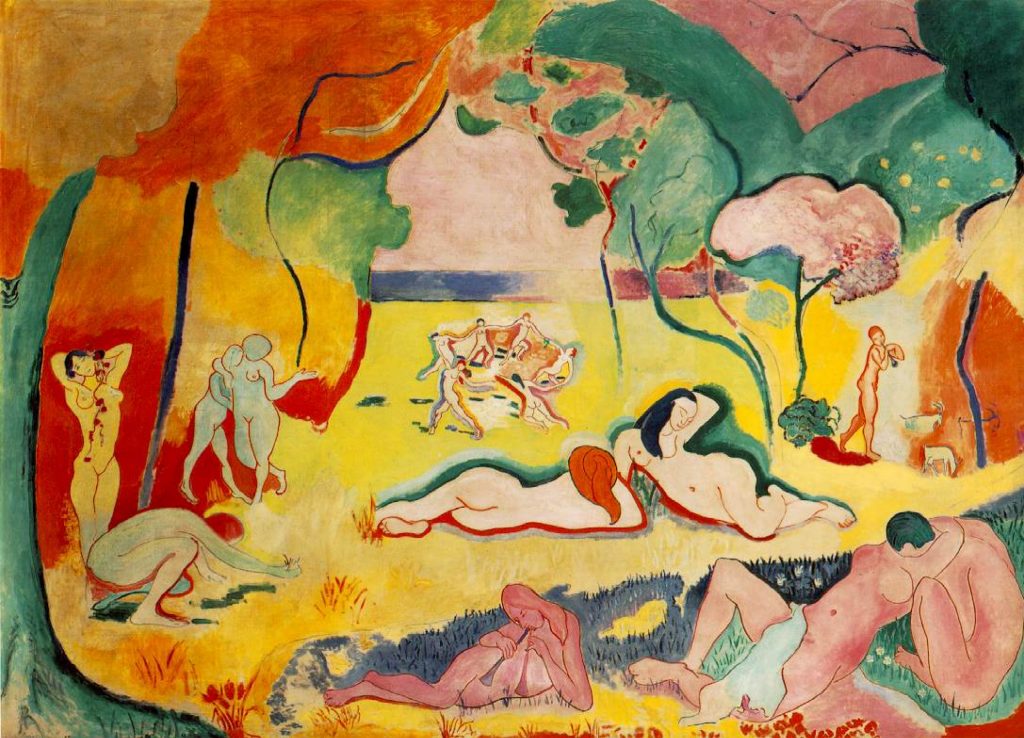
Relaxing Paintings: Henri Matisse, Joy of Life,1905-06, Barnes Foundation, Philadelphia, PA, USA. Wikimedia Commons (public domain).
Matisse creates an idyllic landscape with dancing and relaxing forms. Color, as per the fauvist ideas, is far removed from reality but trying to express emotion. The painter uses warm reds and yellows to convey a calm atmosphere and the happiness of the people that inhabit it. In the center of the painting, we see figures dancing. A few years later, these forms will have their own painting in the famous Dance.
Due to this painting, Matisse’s fame rose in the Parisian art circles of the early 20th century. For a while, he was considered the most radical painter in Paris. It is said that Picasso saw the painting and was immediately jealous of Matisse. He tried to surpass him and the following year presented the Demoiselles d’ Avignon.
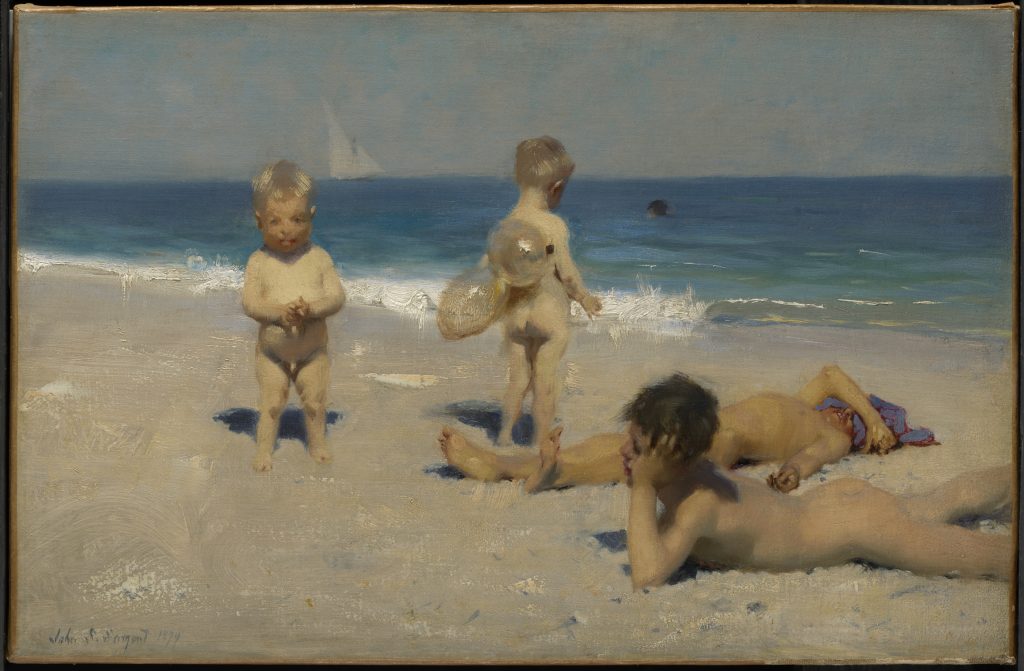
Relaxing Paintings: John Singer Sargent, Neapolitan Children Bathing, 1879, The Clark Art Institute, Williamstown, MA, USA.
What’s more relaxing than a day at the beach? Two small boys have fun in the golden sun, supervised by their parents. One of the boys is wearing a flotation device and looks at the sea. No doubt he is ready to jump in.
Sargent was born in Italy to American ex-pats. As an adult, he returned multiple times to visit Venice, Capri, Naples, and other cities. This painting was created after numerous sketches from his travels in Southern Italy.
DailyArt Magazine needs your support. Every contribution, however big or small, is very valuable for our future. Thanks to it, we will be able to sustain and grow the Magazine. Thank you for your help!